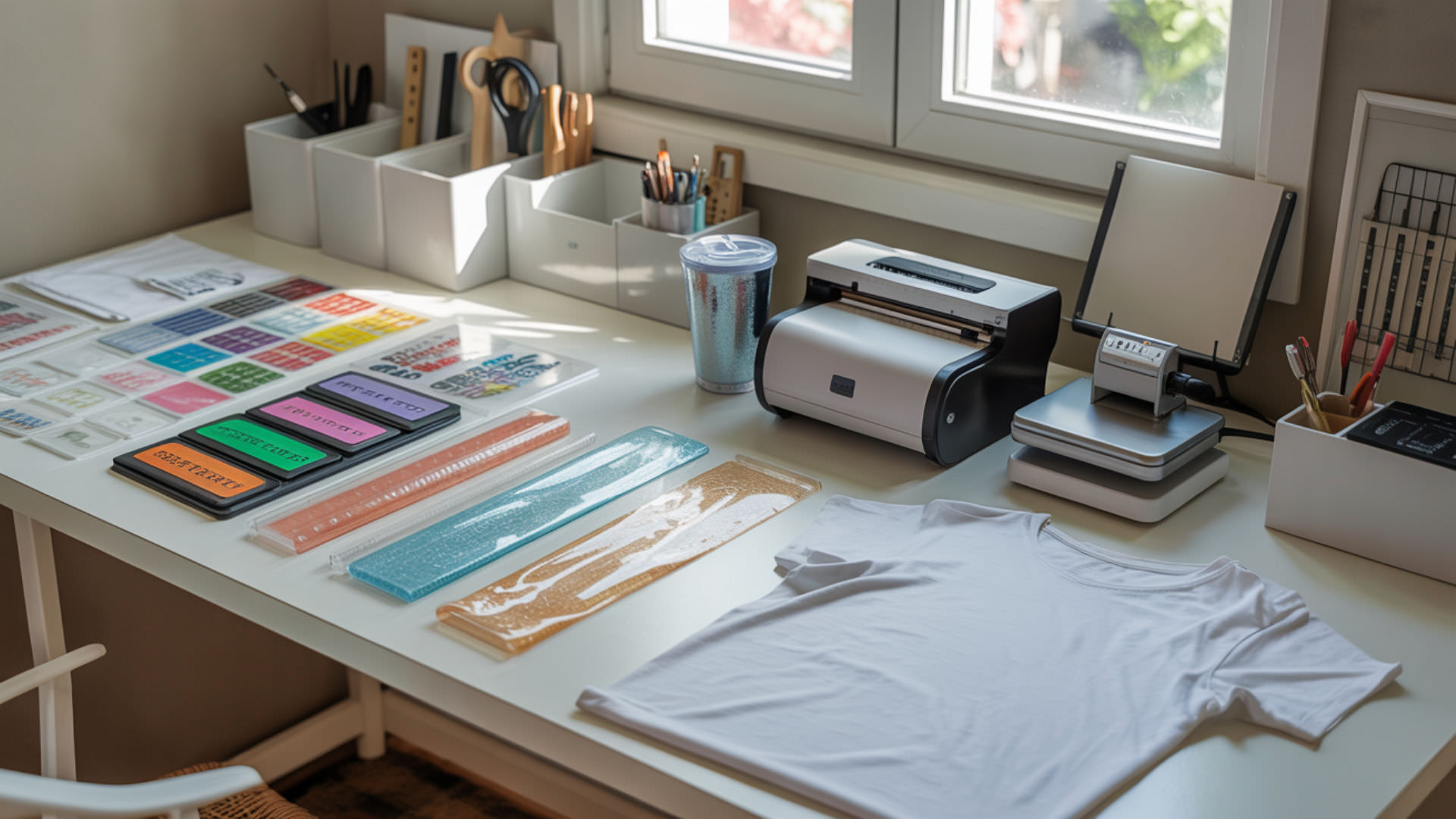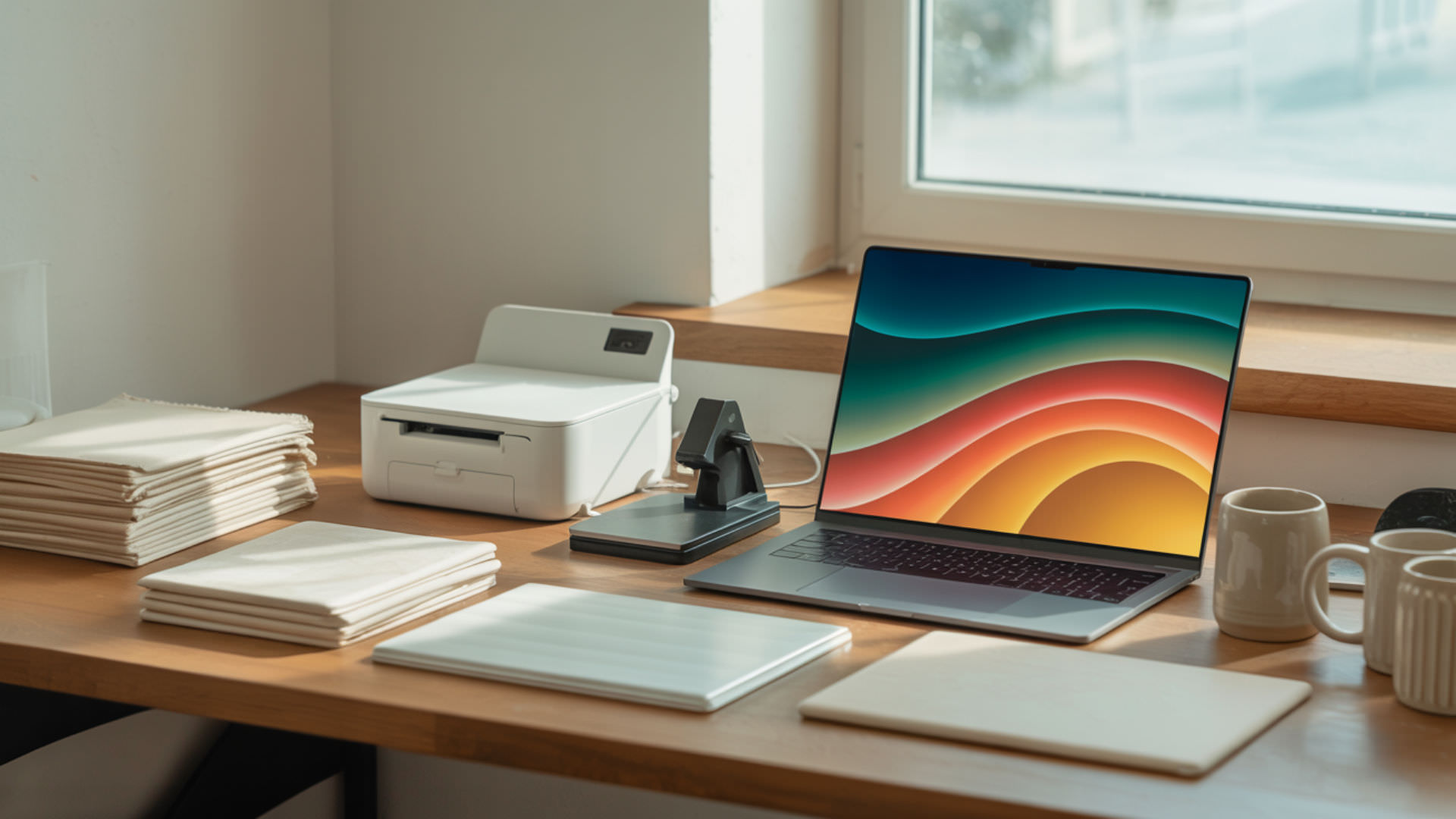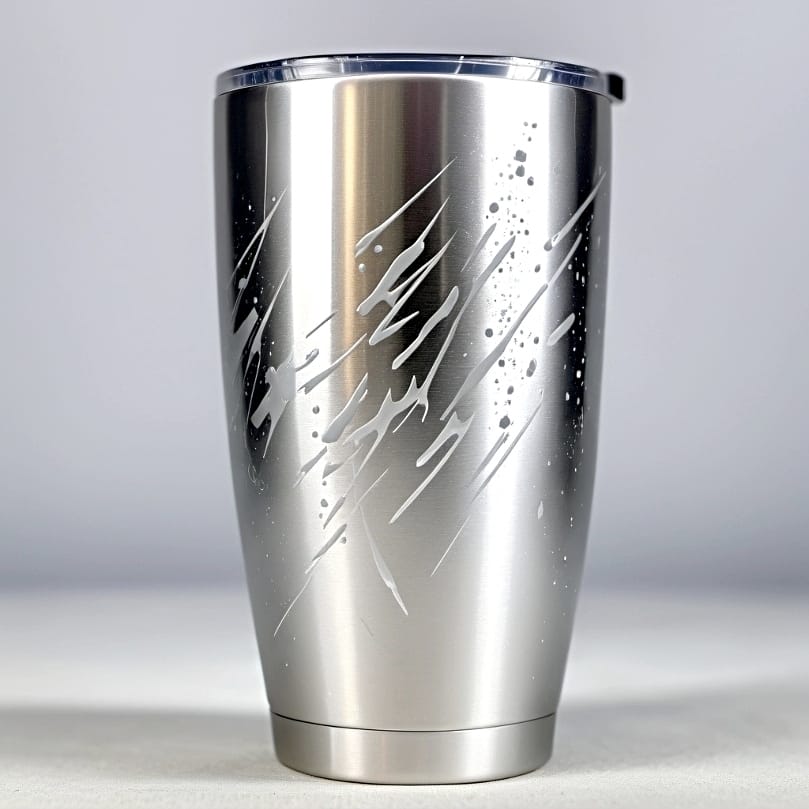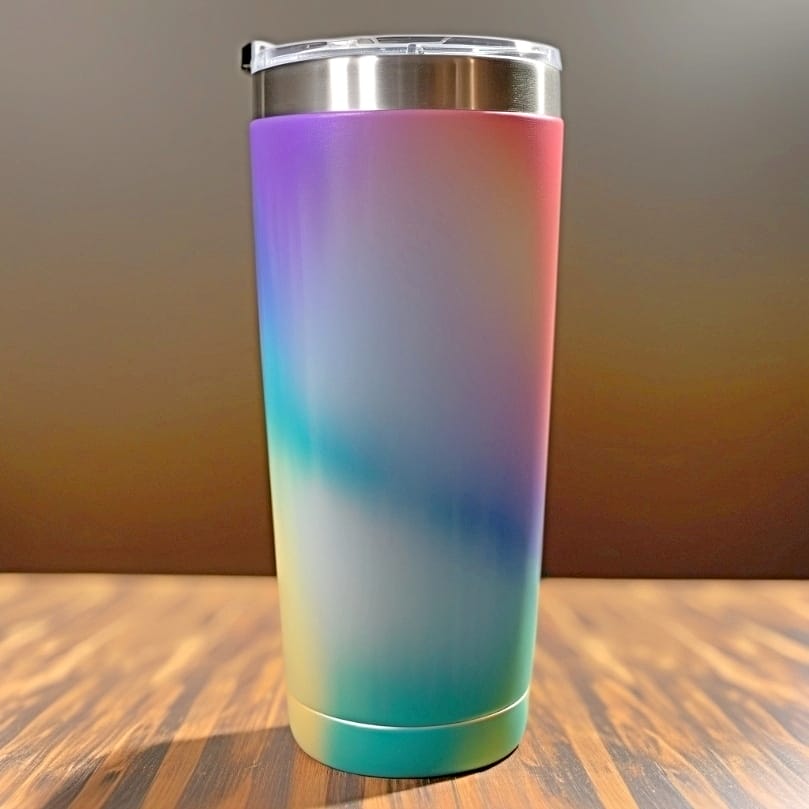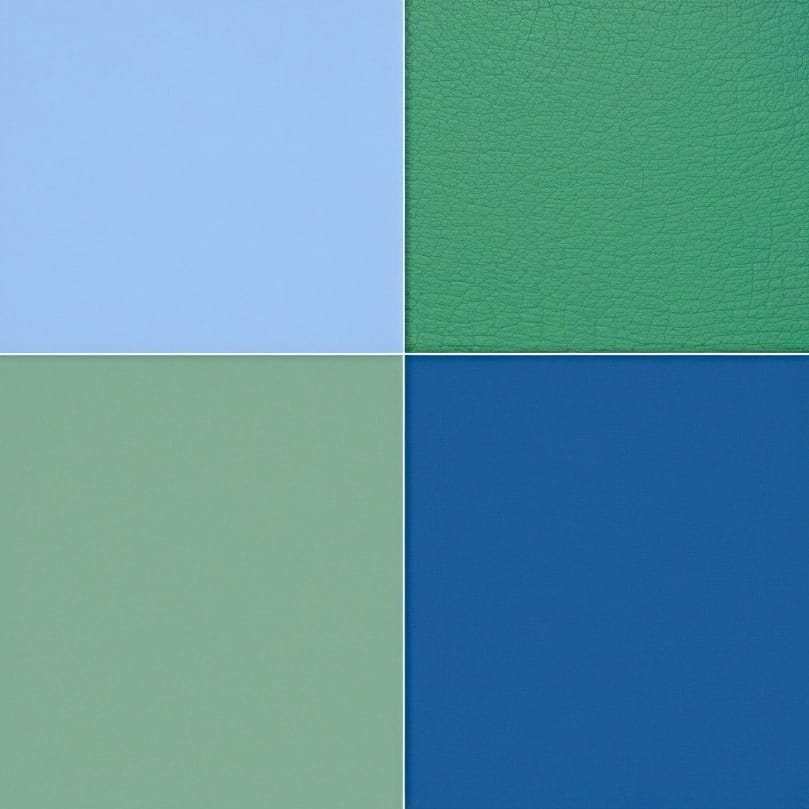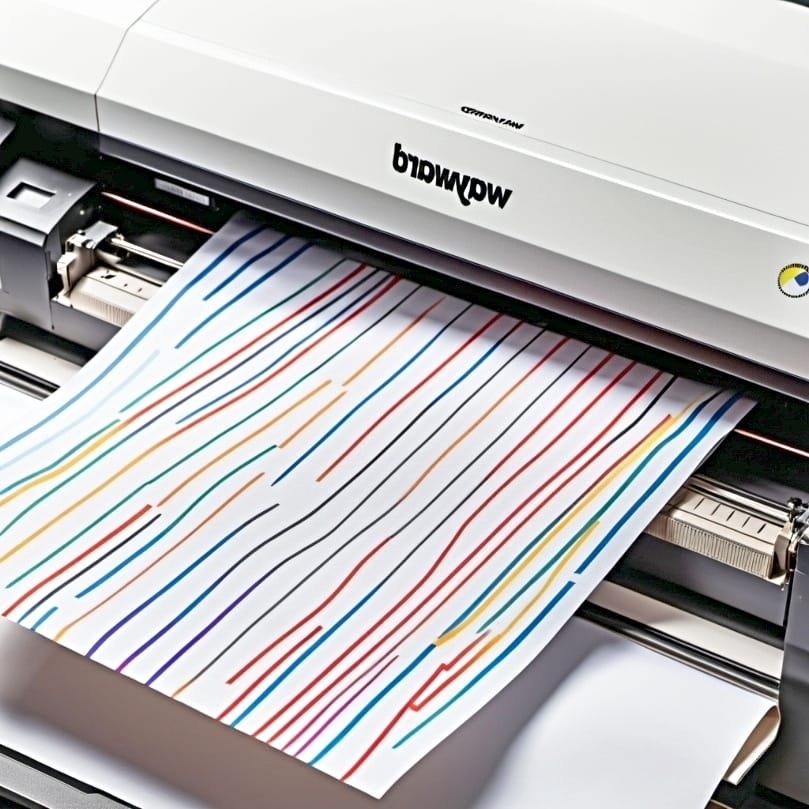Table of Contents
ToggleDTF transfer film combined with sublimation ink creates a hybrid printing method that expands fabric compatibility beyond traditional polyester limitations. The sublimation dye prints onto polyurethane (PU) film, receives an adhesive powder coating, and bonds to cotton, blends, and dark garments through heat activation. Our complete guide to dye-sublimation printing explains the gas-to-polymer bonding process that makes this hybrid technique possible.
Key Takeaways
- TPU film softens at 160–170°C, allowing sublimation dye to bond with the adhesive layer during heat application.
- Quality DTF prints need the right materials like a compatible sublimation printer, high-quality DTF transfer film, DTF powder, and a calibrated heat press set to the correct temperature and pressure conditions.
- The softening point determines activation temperature, typically requiring 300–350°F for proper powder curing and bonding.
Can you print on DTF film using a sublimation printer?

A sublimation printer outputs dye onto polyurethane film, where the ink bonds with the polymer-rich surface instead of vaporizing directly into fabric fibers. After printing, adhesive powder applied to the wet design creates the adhesion layer that transfers onto non-polyester materials. Our guide to sublimation dye handling covers color optimization and print quality techniques for this hybrid workflow.
What types of DTF film work when using sublimation ink?
TPU-coated films accept sublimation ink due to their flexibility and polymer composition, while the PET carrier sheet provides thermal stability during pressing. Films with matte or glossy coatings offer different texture finishes on the final transfer. Choose films rated for sublimation ink absorption to ensure proper dye penetration into the polyurethane layer. DTF films depend on thermoplastic polymers that soften under heat, which is why TPU-based layers can bond to fabric during pressing. [1]
Do you need a sublimation printer specifically for DTF-style transfers?
Any sublimation printer with piezoelectric printhead technology produces suitable dye output for DTF film applications. Heat activates the sublimation dye regardless of printer model, converting the solid ink to gas that bonds with the polymer film. Press time and temperature settings depend on the substrate rather than the printer specifications.
What is the difference between sublimation transfers and DTF transfers?
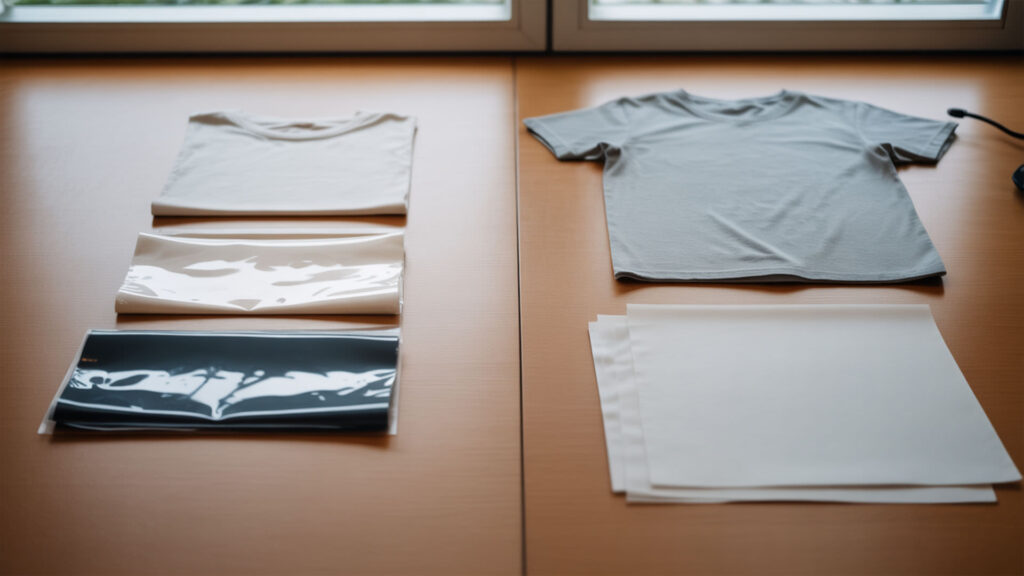
Sublimation relies on diffusion, where gaseous dye penetrates polymer coating and bonds at the molecular level for a smooth, embedded finish. DTF uses TPU adhesive powder that melts and physically adheres the design to fabric as a raised layer on top of the material. Sublimation produces no-feel prints on polyester while DTF creates textured results on any fabric color.
How does the DTF process differ from sublimation?
DTF relies on heat to melt the adhesive film rather than converting dye to gas, creating a physical bond between the ink layer and fabric surface. Excessive temperature causes thermal degradation of the polyurethane coating, while insufficient heat results in chemical degradation of the adhesive bond. Sublimation transfers dye into polymer chains, but DTF deposits ink on top of material fibers.Polymer chemistry determines whether a design bonds by diffusion into a surface or by adhesive attachment, which is why DTF and sublimation behave differently under heat. [2]
⫸ Click Here For Best Selling Sublimation Printers And Products ⫷How is DTF film different from sublimation paper?
Transfer paper stores sublimation dye in a coating that releases ink as gas during pressing without melting or transferring any paper material. Polyurethane film physically bonds to fabric through melt adhesion, leaving a flexible plastic layer containing the printed design. Adhesion occurs because the TPU softens and fuses with textile fibers under heat and pressure.
Do you need sublimation ink when making DTF-style transfers?
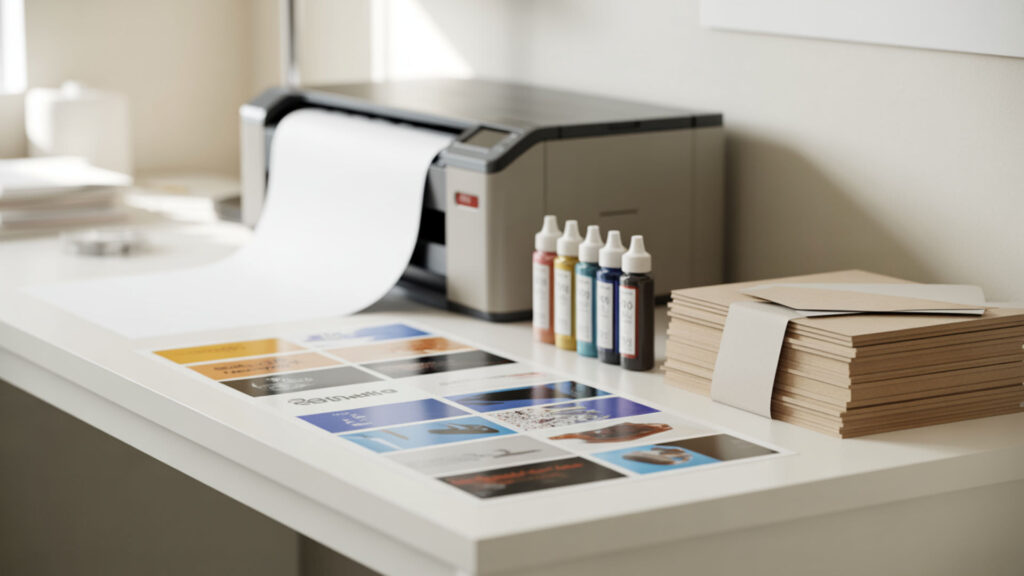
Sublimation ink works for DTF-style transfers because the dye undergoes gas diffusion into the polymer-rich film surface during the curing process. The adhesive powder creates the bonding mechanism that attaches the inked film to non-polyester fabrics where traditional sublimation cannot penetrate. This hybrid method lacks white ink capability, limiting designs to light-colored garments.
Does sublimation paper require DTF powder?
Standard sublimation paper does not use DTF powder because the dye transfers directly into polymer coating on the substrate through gas conversion. TPU powder serves as the adhesive that bonds DTF film to fabric, but sublimation paper releases ink without physical adhesion to the material. The polymer coating on sublimation blanks replaces the adhesive function that powder provides for DTF transfers.
What temperature is typically used when applying DTF-style sublimation transfers?
DTF-style transfers require 300–320°F for 12–15 seconds on most fabrics, with the heat press reaching the TPU softening point to activate bonding. Cotton items need higher temperatures between 350–375°F, while synthetic materials perform better at 280–300°F to prevent damage. Stability from a dedicated heat press ensures consistent temperature across the entire transfer surface.
How do you use DTF film with a sublimation printer step-by-step?
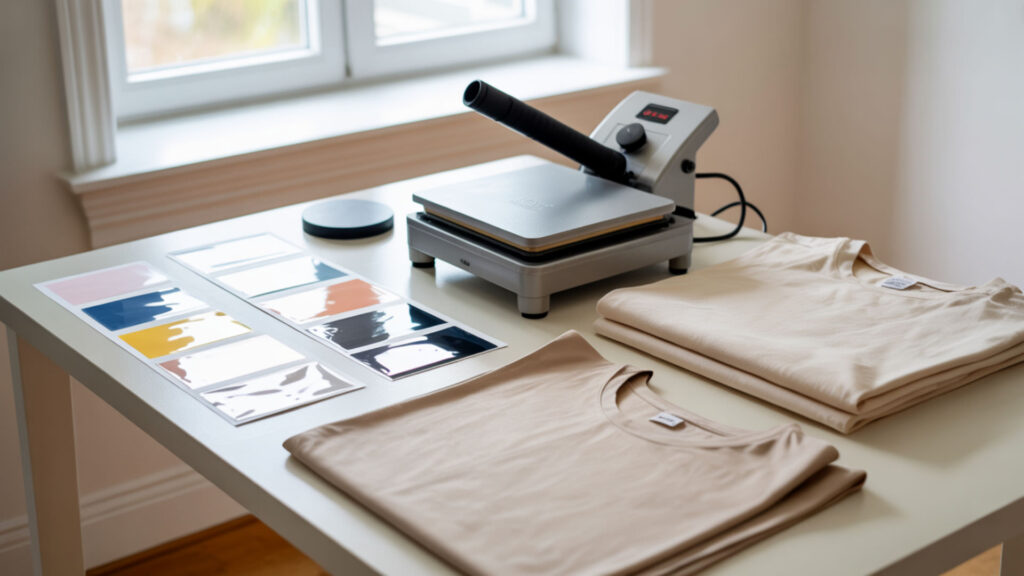
- Print the mirrored design. Load polyurethane film into your sublimation printer and print the design in mirror mode using high-quality settings for maximum dye saturation.
- Apply adhesive powder. Cover the wet printed design completely with DTF powder, shake off excess, and ensure all inked areas receive even powder distribution.
- Cure the powder. Heat the powdered film at 320–350°F for 2–3 minutes using a curing oven or hover method with a heat press until the powder melts into a smooth, matte finish.
- Prepare the substrate. Clean the fabric surface preparation area, pre-press for 3–5 seconds to remove moisture and wrinkles, and position the cured transfer face down.
- Press and peel. Apply pressure at 300–350°F for 12–15 seconds, then peel hot or cold depending on your film type and perform a final press to set the design.
Can you apply DTF-style transfers to sublimation tumblers?
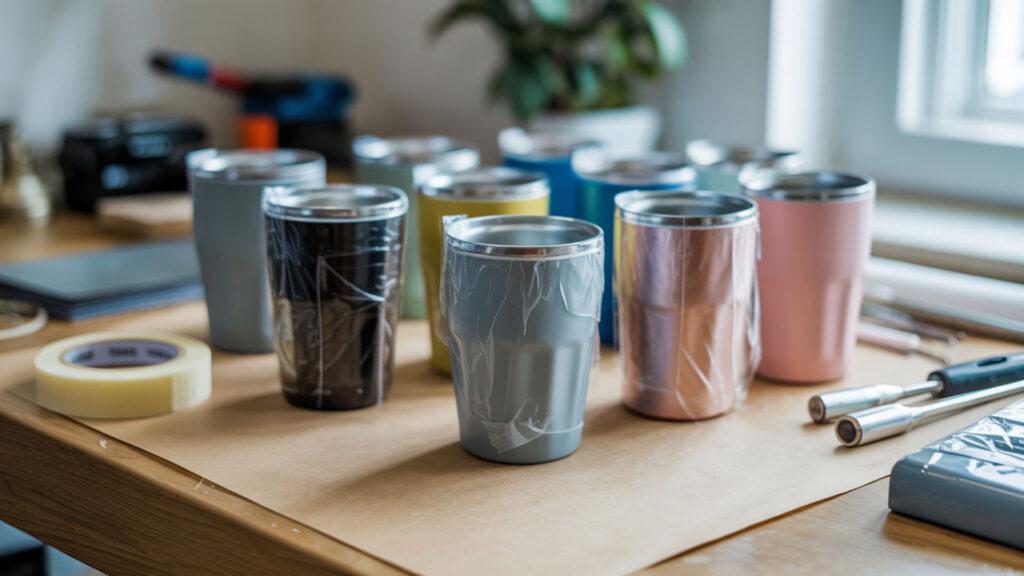
DTF transfers adhere to sublimation tumblers, though the result differs from traditional sublimation with a textured, layered finish rather than an embedded design. The polyurethane film must maintain thermal stability throughout the curved surface application where convection airflow distributes heat unevenly. UV DTF wraps provide better adhesion on hard surfaces including both coated and non-coated tumbler blanks.
How do you apply transfer sheets with sublimation?
Position the printed transfer face down on the substrate, secure edges with heat-resistant tape, and apply consistent heat to activate the TPU layer. Time at temperature determines dye penetration depth, with longer pressing allowing more complete color transfer into the polymer surface. Remove tape and peel immediately for hot-peel films or wait for complete cooling with cold-peel types.
How do you press sublimation transfers correctly?
Set the heat press to 385–400°F, apply medium-firm pressure, and press for 60 seconds without shifting the platen during transfer. Pressure ensures even contact across the entire design, preventing ghosting or incomplete ink transfer. Thermal equilibrium across the substrate produces consistent color saturation, so pre-pressing removes moisture that disrupts even heat distribution.
Can you use a sublimation heat press for DTF-style transfers?
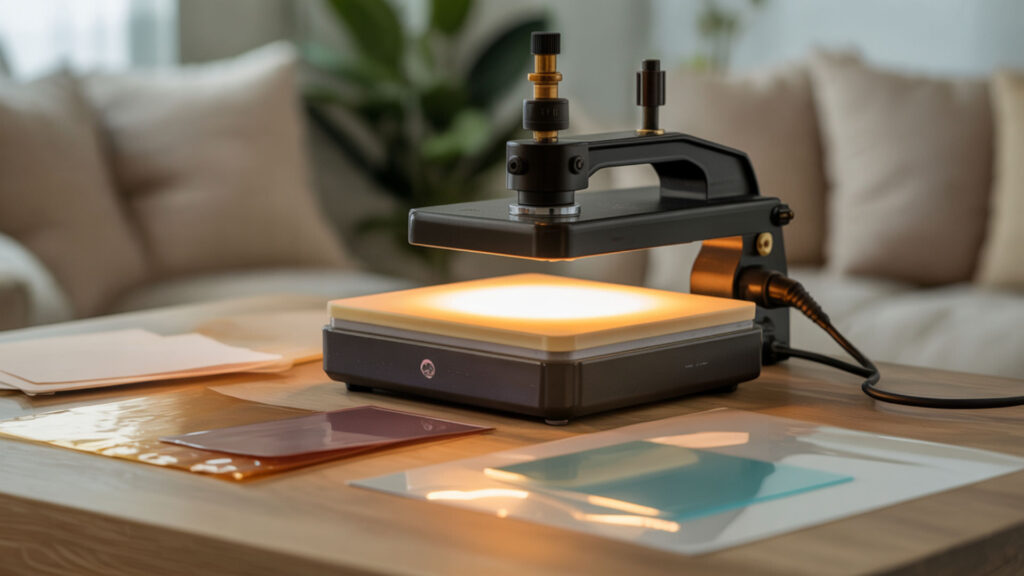
A sublimation heat press works for DTF transfers because both processes require controlled temperature and consistent pressure for proper adhesive melting. The press must reach the TPU softening point between 300–350°F while maintaining even heat distribution across the transfer area. Our guide to alternative heat press methods explains options when dedicated equipment is unavailable.
Do DTF transfers require heat pressing?
Heat activates the melt-bonding process that fuses the polyurethane film to fabric fibers, making some heat source essential for DTF application. Pressure ensures the melted adhesion layer makes complete contact with the textile surface for durable results. A household iron can work for small projects, but inconsistent temperature and uneven pressure often cause peeling and cracking over time.
What temperature is needed to cure DTF transfers?
DTF powder curing requires 320–350°F for 2–3 minutes, with temperature reaching the TPU softening point without exceeding thermal stability limits that cause film degradation. Curing ovens maintain 300–325°F while heat press hover methods use 350–400°F for shorter durations. The powder achieves proper cure when it displays a smooth, matte finish with no visible dry or powdery texture remaining.
Ready to Combine DTF and Sublimation Printing?
Hybrid DTF-sublimation workflows expand your product range to include cotton, dark fabrics, and mixed-material items that traditional sublimation cannot reach. Temperature control, proper film selection, and quality adhesive powder determine transfer durability and color vibrancy. Browse our recommended TPU films, powders, and pressing supplies to build your hybrid printing setup.
Frequently Asked Questions
Can you use an Epson printer for DTF-style transfers?
Epson printers with Micro Piezo printhead technology accept sublimation ink for DTF film printing, including models like the ET-8550, P600, and P800. Converting the printer requires installing sublimation ink cartridges and adjusting settings for film media. The printer must remain dedicated to sublimation ink because switching between ink types causes clogging and permanent printhead damage.
Do DTF transfers peel hot or cold?
Hot-peel transfers release immediately after pressing for faster production, while cold-peel films require complete cooling before removal for maximum durability and detail retention. Cold peeling provides stronger adhesion and a matte finish with reduced cracking risk during washing. Check manufacturer specifications for your specific film type because peeling method affects final transfer quality and longevity.
What type of printer is recommended for DTF transfers?
Dedicated DTF printers or converted Epson EcoTank models handle the specialized ink requirements including CMYK and white channels for dark fabric printing. The printer needs minimum 1440 dpi resolution, piezoelectric printhead technology, and compatibility with DTF-specific RIP software for proper color management. Sublimation printers work for light-colored garments but lack white ink capability.
How do you use DTF transfer film?
Print the mirrored design onto DTF film, apply adhesive powder to wet ink, cure under heat until powder melts, then press onto fabric at 300–350°F for 12–15 seconds. Position the film design-side down on the prepared garment, apply firm pressure, and peel according to your film type specifications. A final press after peeling sets the design and improves wash durability.
What materials are compatible with DTF transfers?
DTF transfers adhere to cotton, polyester, nylon, fleece, linen, leather, and fabric blends of any color including dark and black materials. The polymer-based adhesive bonds with textile fibers regardless of fabric composition, unlike sublimation which requires polyester content. Avoid heavily textured surfaces where the film cannot make complete contact with the material.
References
- Polymers. (n.d.). School of Materials Science and Engineering. https://www.mse.gatech.edu/research-area/polymers
- https://www.cas.org/industries/plastics-and-polymers

